Which Memory Card For My Camera
Best memory card for your camera in 2022: elevation SD, microSD, CFexpress & CF cards
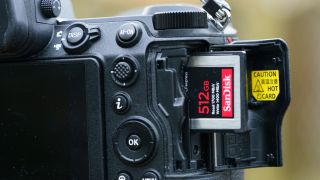
If you don't have the all-time retentivity card for your camera, then y'all're not going to get the virtually out of your photoshoots. With so many options for speed, chapters, brand, compatibility and price available, you might initially feel overwhelmed. However, we've cleaved downwards the best retentivity cards available to show you which ones are best for you.
When you think of a retentiveness carte, you'll likely find that the pop SD card format comes to mind. Still, if y'all're using a newer photographic camera, or one of the all-time professional person cameras (opens in new tab), and so you lot'll likely demand to look for a CFexpress or XQD bill of fare. However, Meaty Flash, microSD and CFast cards are still all regularly used as well.
One of the about obvious means to differentiate betwixt memory cards is how much storage they have. A 16GB card might exist fine for an afternoon wandering around your local biological reserve, but videographers looking to shoot all day could become frustrated with having to constantly swap over cards.
However, this isn't the only way to judge what memory card is best, as you'll also demand a card with fast read and write speeds. This will not only affect how quickly yous can transfer images from the retentiveness card to your figurer (or one of the all-time portable hard drives (opens in new tab)), merely it volition also bear upon the burst mode on your photographic camera. If your memory carte du jour isn't fast enough, yous'll find that it will lag and struggle to accomplish the blisteringly-fast shooting speeds that some of the latest cameras are capable of.
Read more: How to understand everything written on your retentiveness carte du jour
If you're however not quite au fait with all of this technical lingo, so don't worry. Nosotros've put together a handy jargon explainer at the lesser of this article to help you detect the best memory carte for your needs.
The best memory card in 2022
SD
Best SD cards
The postage stamp-sized SD carte du jour is the format used by nearly digital cameras. SD has largely succeeded CompactFlash, although the latter is still popular in some older pro DSLRs. Most menu manufacturers offer ranges that give you a choice of SDHC and SDXC, which both broadly exercise the same thing, just at slightly differing speeds and capacities. You'll detect a more detailed explanation of this below. The best memory carte du jour for your needs will depend largely on how you want to remainder capacity, speed and cost.
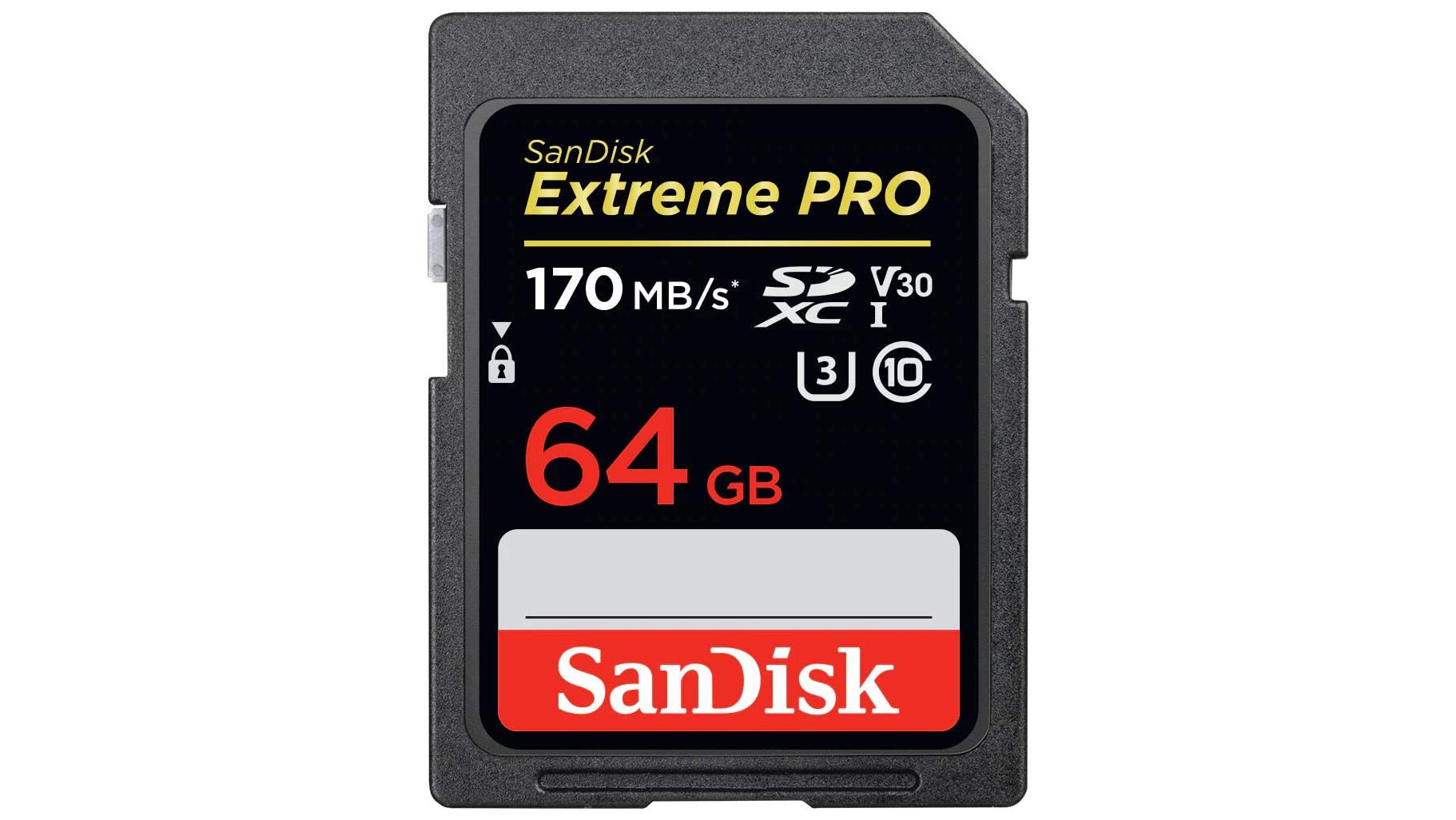
If y'all're a photo enthusiast passionate about your hobby, then you could do worse than picking up the Extreme PRO SDXC bill of fare from industry stalwart SanDisk. This unassuming card is i of the best SD memory cards y'all can choose, with capacities ranging from 32GB to a staggering 1TB and an impressive UHS Speed Class iii rating.
However, the virtually impressive attribute of the Farthermost PRO SDXC card is its write speeds of upwardly to 90MB/s, which allows your camera to handle rapid-fire sequential shooting in both JPEG and RAW with ease. Meanwhile, its rapid 170MB/s read speed is perfect for a refreshingly fast workflow. Aside from capturing Raw photographs, the data crunching on offer with this memory card as well makes information technology suitable for 4K video capture. In curt, this is a great, reliable all-rounder – and its price makes it hard to beat.
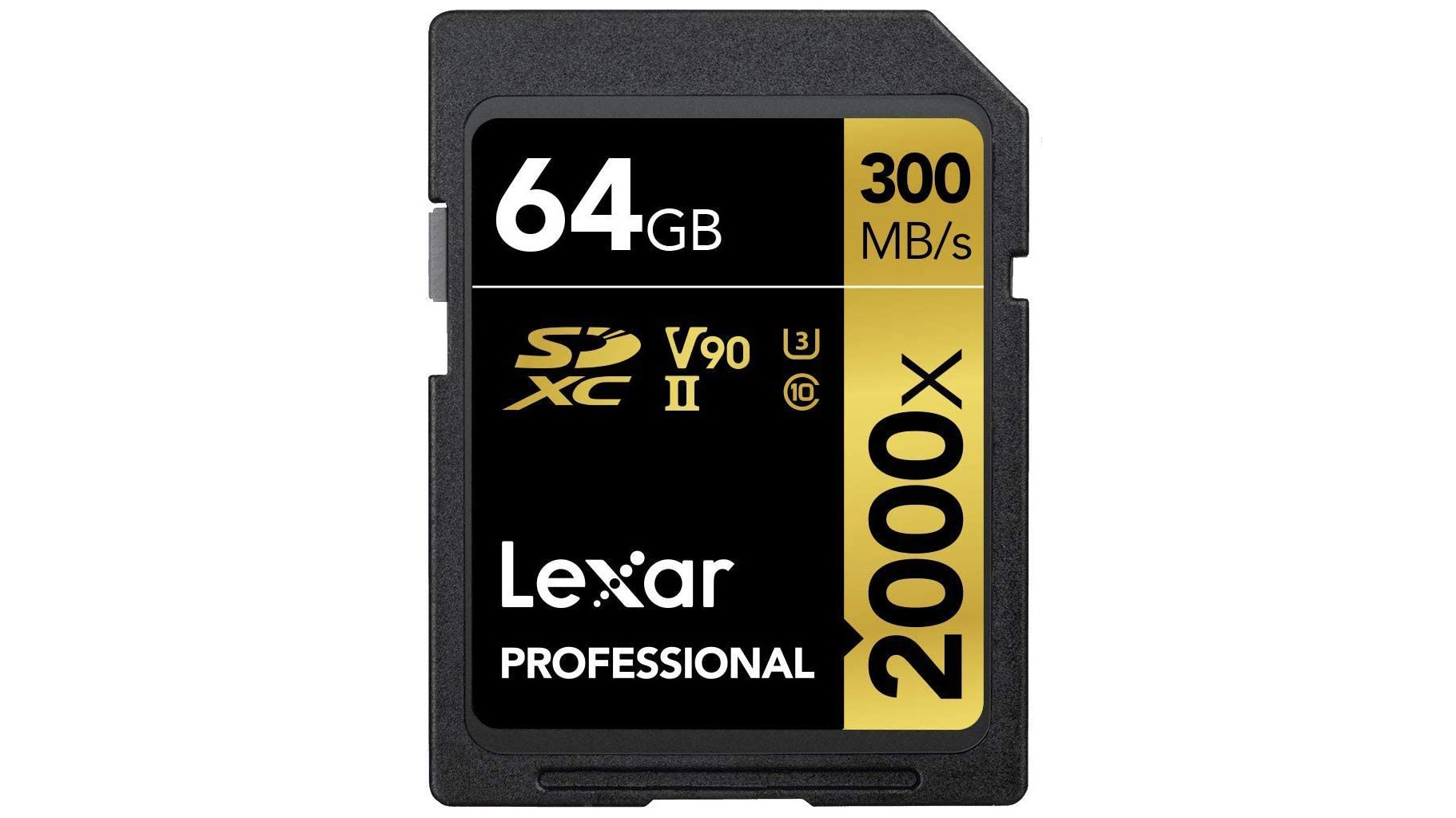
Lexar has long been a go-to card brand for photograph enthusiasts, with this pro card being top of the tree for the states, deploying UHS-Two tech to enable read speeds upward to 300MB/south and 260MB/s write speeds. So whether you lot're shooting Full Hd, 4K video, or high-resolution Raw files, this menu is eminently suitable, even if maximum capacity is 128GB, rather than the 512GB-1TB offered by some rivals. A close friction match for SanDisk's Extreme PRO SD UHS-Ii (also featured hither), in terms of performance and spec, we similarly can't really go wrong with one of the best retentivity card options out in that location right now.
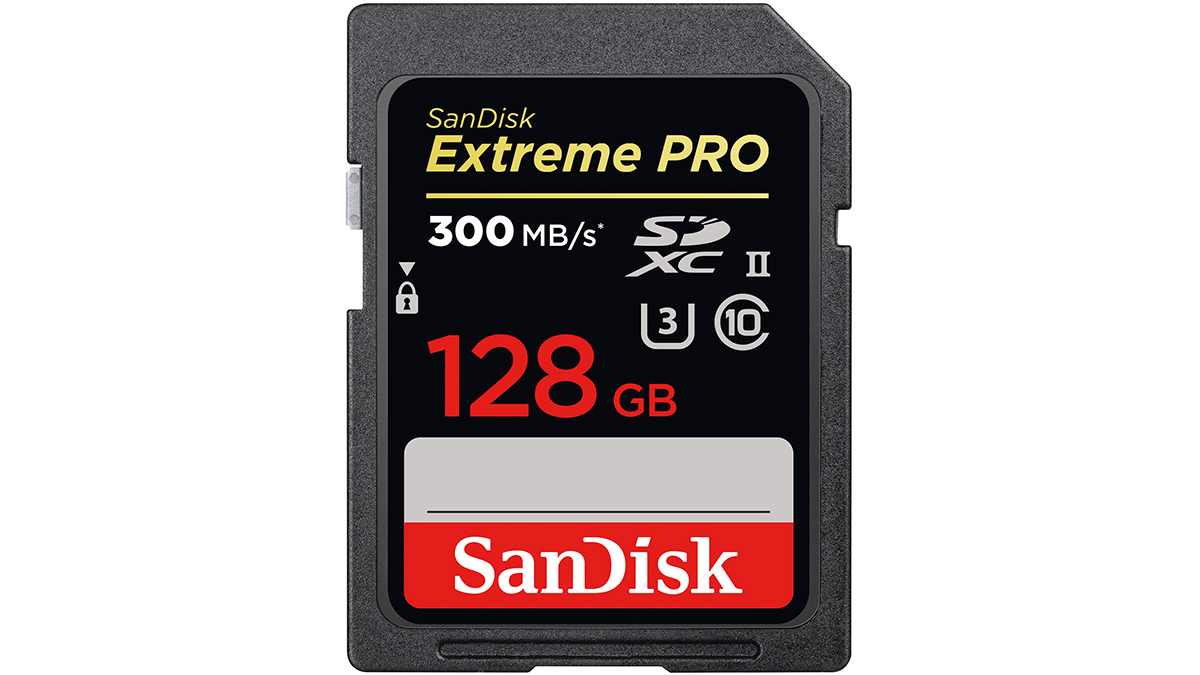
Offering read speeds of up to 300MB/s and write speeds of an every bit impressive 260MB/s, this SanDisk UHS-II SD bill of fare is very much peak dog amid retentiveness cards. This kind of spec makes it the best retention carte du jour for sports, wild animals and news photographers, shooting bursts of rapid burn stills, or videographers recording the moment in eye-poppingly articulate 4K resolution. As this is an SDXC (Extended Chapters) card too, available storage is impressive, ranging from 32GB upwardly to 128GB, merely actually it's all most speed hither – and reliability with it – in preference to anything else.
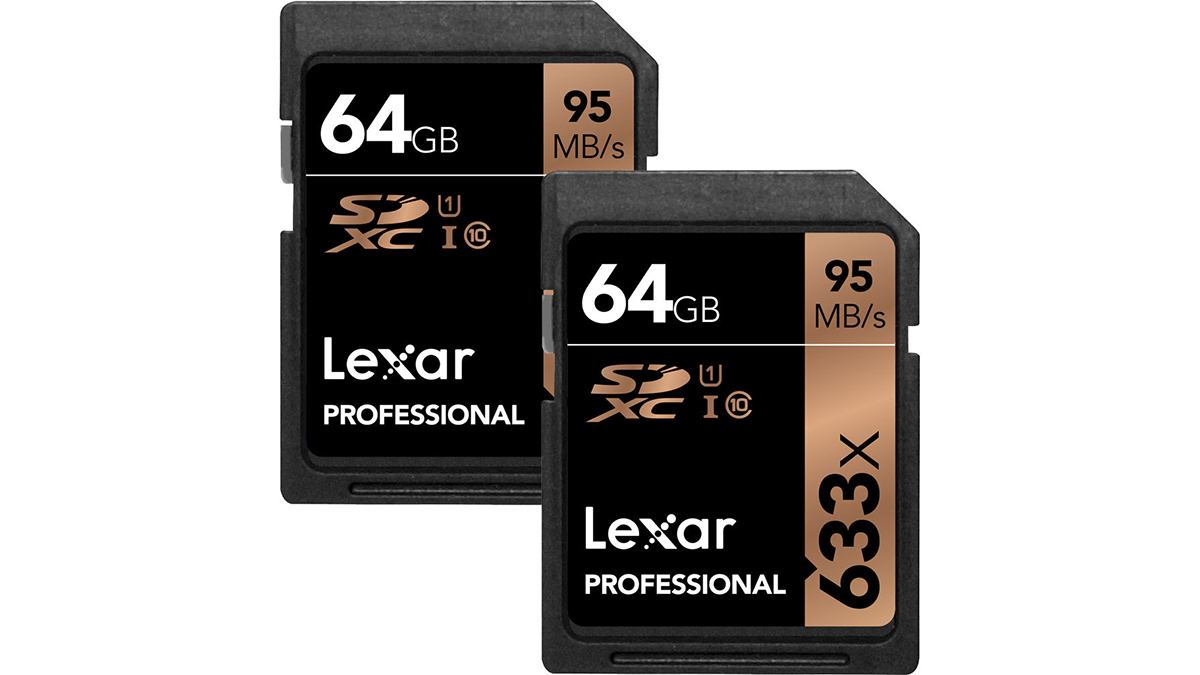
If you lot're shooting loftier-resolution video, you're always going to need as much storage space for digital information as you tin can become. The Lexar Professional 633x SDHC/SDXC UHS-I boasts a huge 1TB capacity choice, although read and write rates are a petty more minor these days. This ways you have to decide which is more important to yous: having the infinite to store many hours of video, or having the fastest possible transfer speeds between devices.
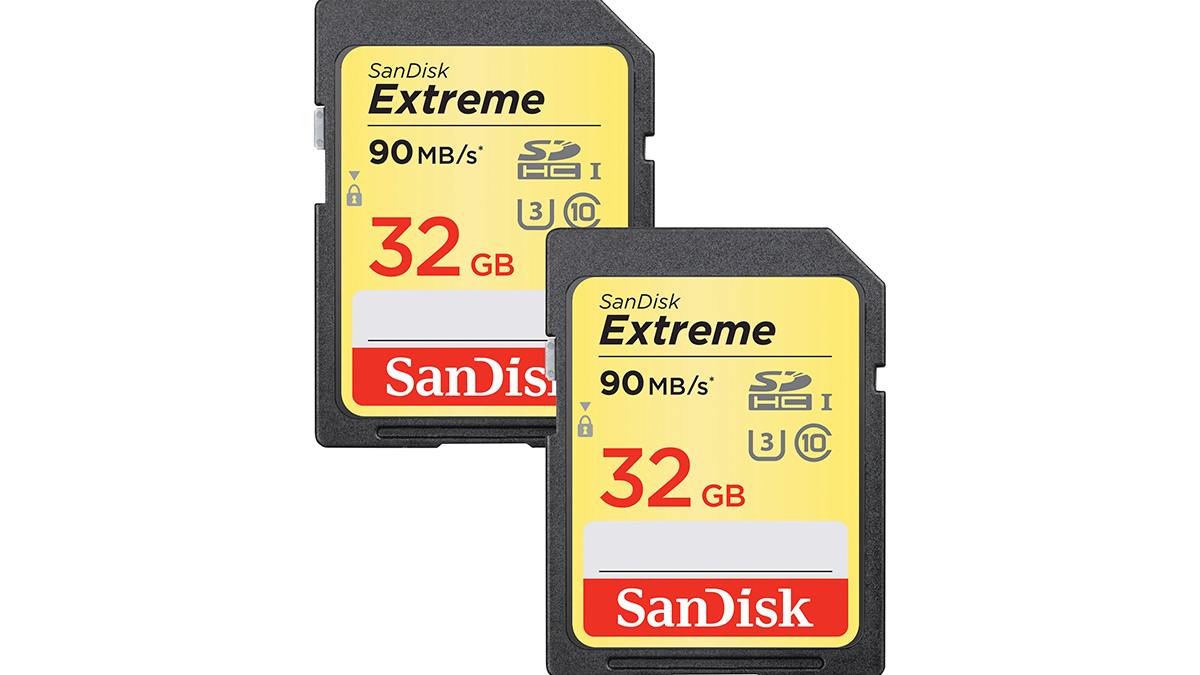
SanDisk's Extreme range of SD cards come in both standard and Pro versions. Naturally, the Pro cards are slightly more than expensive, but even this regular Extreme card features UHS Speed Class 3 compatibility to exist able to cope with both Full HD and 4K recording.
A 16GB SanDisk Extreme card tin can offering information read speeds of up to 90MB/s and write speeds of upwards to 40MB/s. While these aren't mind-blowing numbers, they're perfectly suitable for most photography needs. Outdoor photographers will be pleased that these cards are also water, shock, temperature and 10-ray proof.
If you lot have no need for blisteringly fast read/write speeds, the SanDisk Extreme range is a great option at reasonable prices.
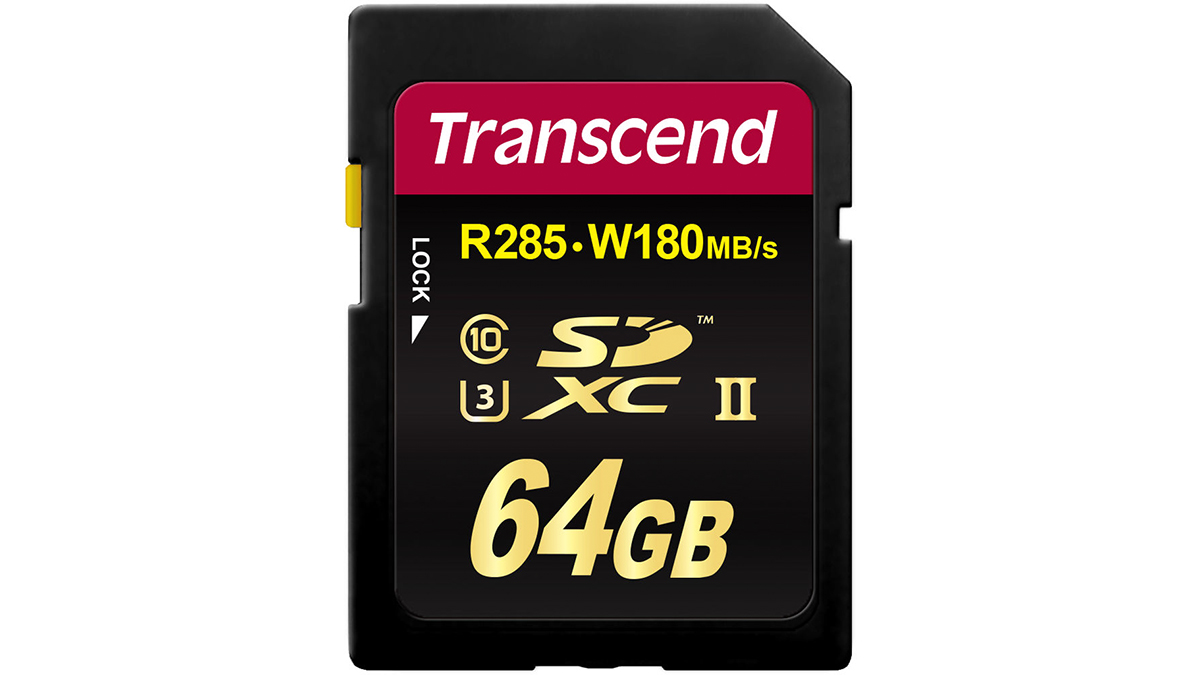
If you're shooting raw files you desire a card that can handle sequential bursts of the highest quality imagery, as well every bit a chapters that allows for sufficient storage to avert having to swap cards every five minutes. The Transcend SDXC UHS-2 U3 is a belter that delivers whether you're shooting raw files or loftier resolution video. While the 64GB maximum capacity (the alternative existence 32GB) may announced a little modest at showtime compared with other options here, the functioning is anything but, with blisteringly swift read and write times of 285MB/s and 180 MB/s respectively. Capable of working with a UHS-II compatible DSLR or camcorder, speeds are up to 3x faster than standard UHS-I SD retentiveness cards This card is also shock and X-ray proof, giving enthusiasts and pros added peace of heed.
microSD
Best microSD memory cards (opens in new tab)
Smaller cameras similar activeness cams use the microSD format, likewise as drone, smartphones and tablets. Technically, information technology's simply the aforementioned every bit the SD format, with similar capacities and speed ratings, just in a much smaller form.
Encounter also Best microSD cards (opens in new tab)
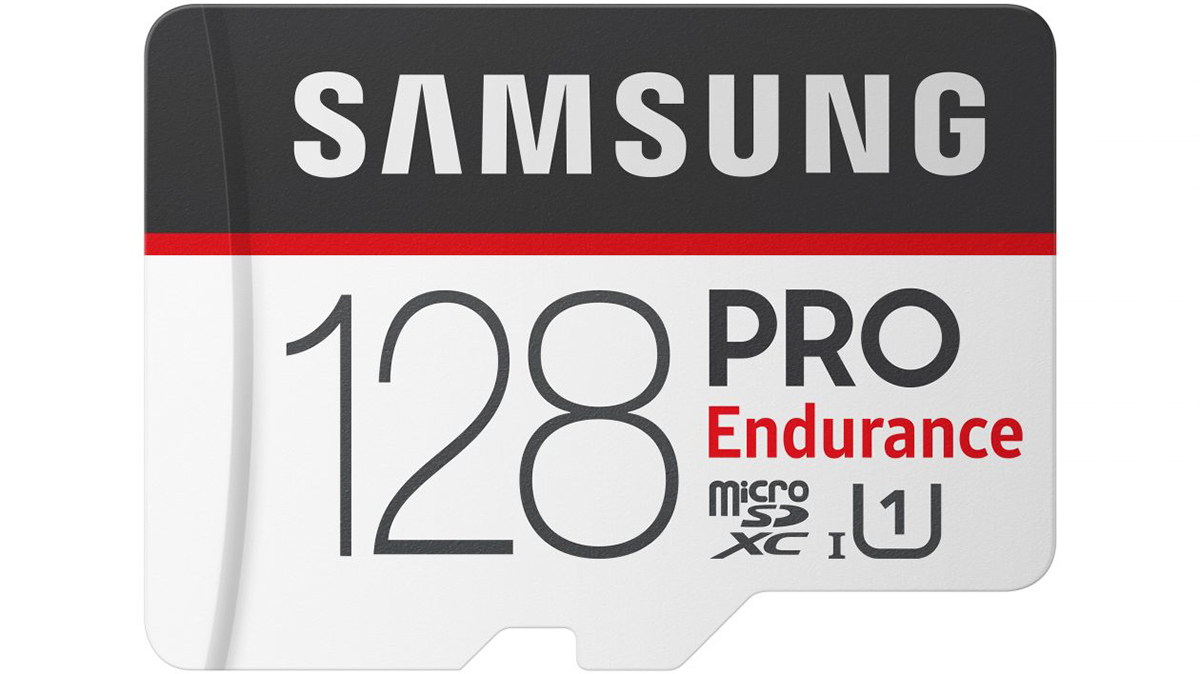
Samsung PRO Endurance SD retentivity cards cost a shade more than standard microSD cards, simply they're designed to exist the best microSD cards for harsh environments and are longer lasting – hence the 'Endurance' moniker - with an manufacture-all-time of 43,800 hours of continuous video recording is promised by the highest capacity card. They can continually record at loftier read/write speeds (100MB/s and 30MB/s respectively). Warranties on the cards vary betwixt two years for the lower capacity cards, to v years for maximum capacity.
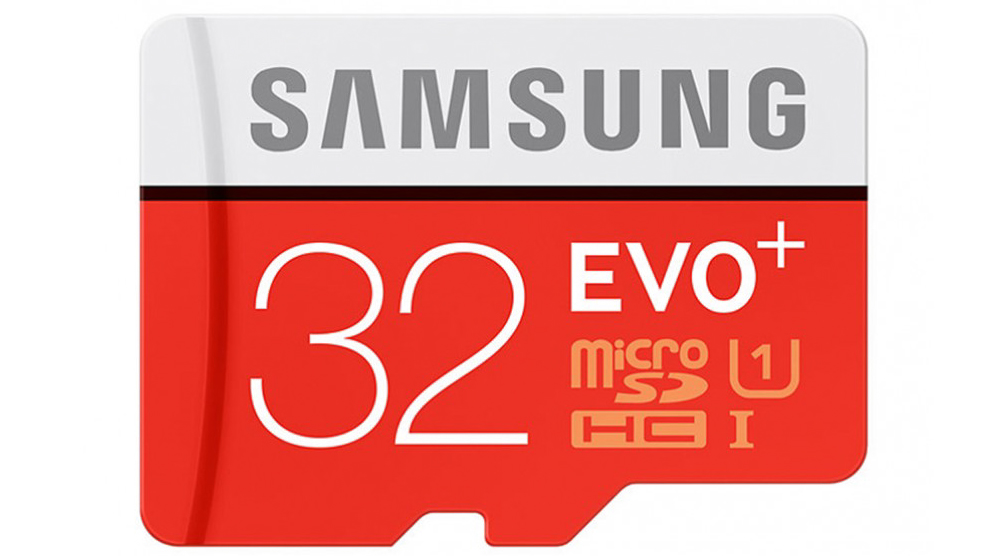
Available in 32GB, 64GB, 128GB and 256GB capacities, these speedy Class 10 Samsung EVO Plus microSDHC and microSDXC cards come up with an SD adapter that allows them to be used in standard SD menu cameras just as easily as in a smartphone or tablet. The smallest-chapters 32GB types won't break the bank, despite managing read speeds of 100MB/s, although a write speed of 30MB/s is a little more pocket-size. The vivid reddish design besides ensures Samsung's general utilize offer won't be easily lost, despite information technology being the size of a fingernail. Complete with a x-yr express warranty for peace of mind, the cards are as well waterproof, temperature proof, X-ray proof and magnetic proof. You really tin't go wrong with this carte du jour.
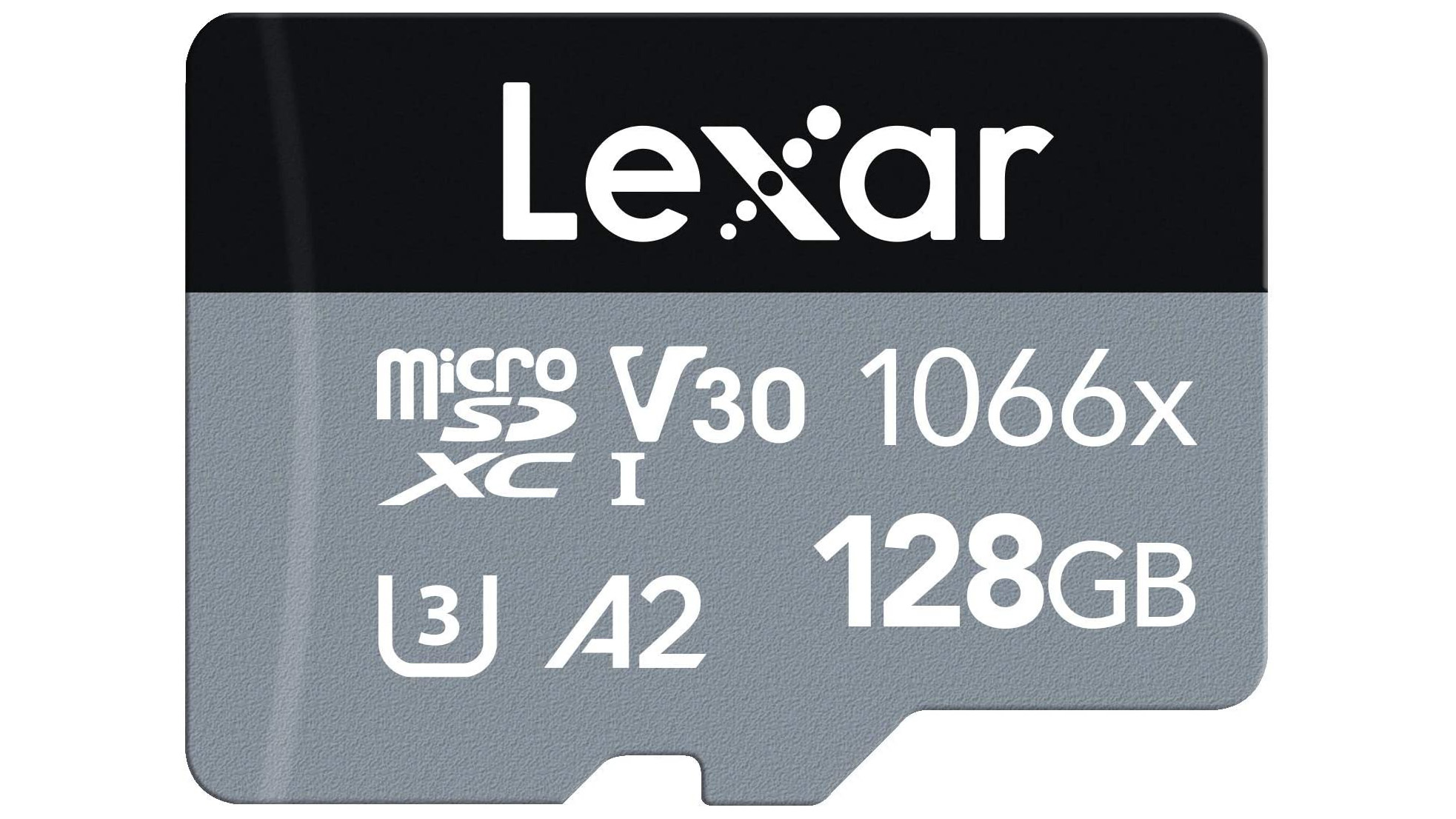
This decent footling microSD carte du jour is available for a really competitive price, and it boasts respectable 160MB/s read and 120MB/south write speeds, despite it not having the faster UHS-2 transfer standard. This menu comes in 64GB, 128GB, 256GB and 512GB variations (the latter being platonic if you lot shoot 4K footage), so you should exist able to cull whichever size fits your needs and your upkeep.
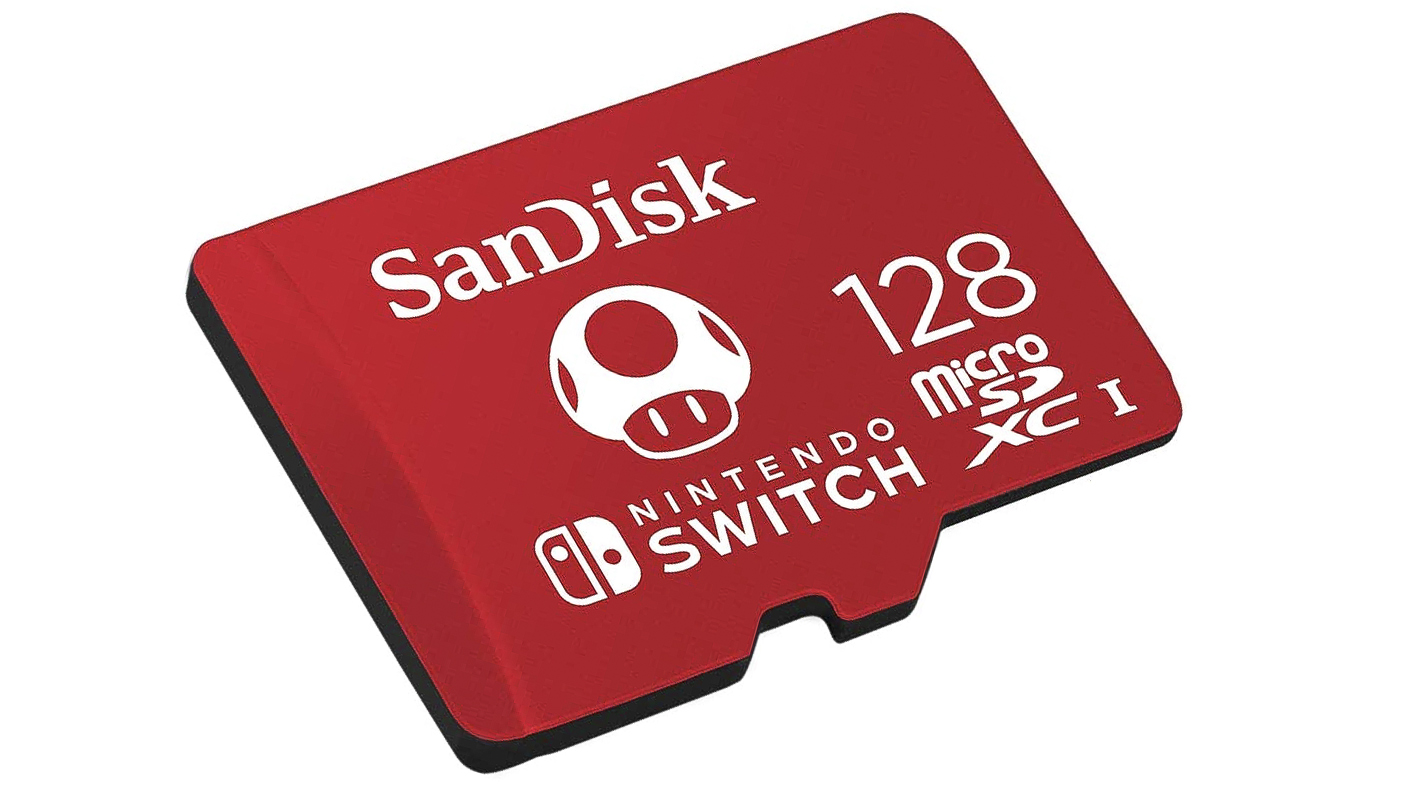
It is not just cameras that utilise microSD cards, of grade. And one of the most popular devices to use this retentivity type at the moment is undoubtedly the Nintendo Switch handheld panel, and its baby blood brother the Nintendo Switch Lite. The slot in retentiveness is not only peachy for expanding the number of games yous carry, but also for taking screenshots and videos of your victories and adventures. The cards are different colors depending on the capacity - then ruby-red with a Nintendo Mushroom icon for 128GB, yellowish with a Super Star for the 256GB, and teal greenish for the 512GB card. Yous don't need these customized cards, every bit any microSD menu will work in your Switch – but you volition earn kudos points for brand loyalty.
• Run across also Best microSD cards
CompactFlash
Best CompactFlash cards
There are still lots of cameras around that utilise the Compact Flash format, and it gets enough of support from retention menu makers. The new and upcoming formats for pro cameras are XQD, CFexpress and CFast (all listed further downwards), but the Meaty Flash retention card format looks like it volition be effectually for a while nevertheless.
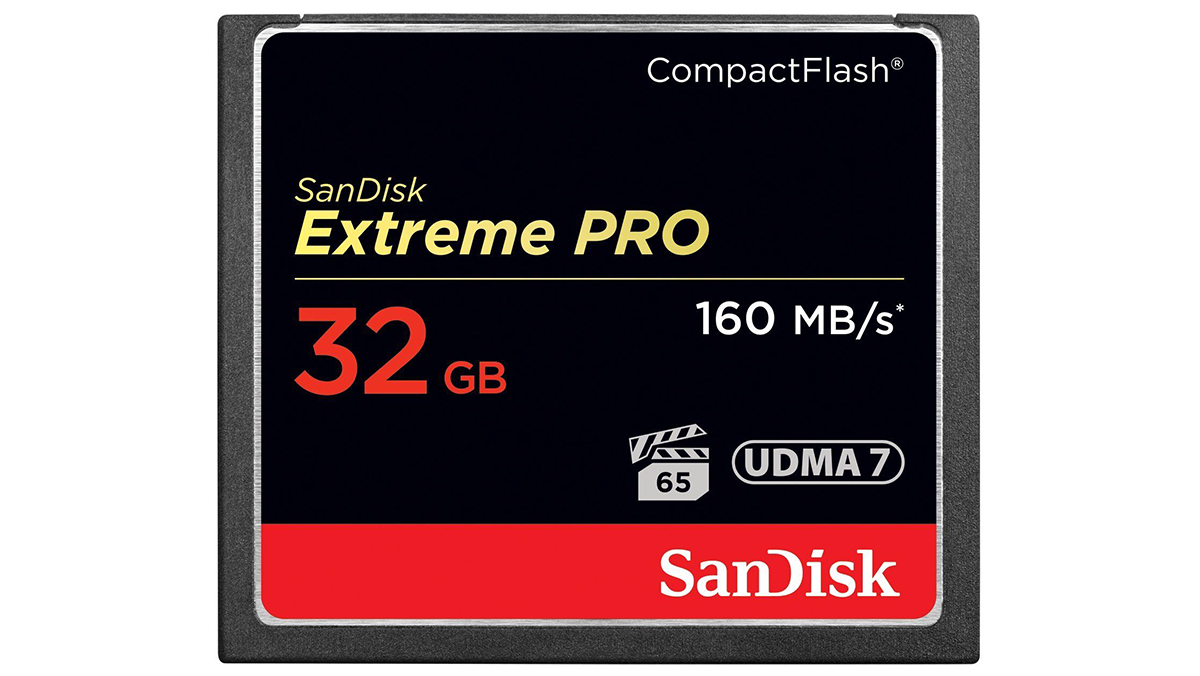
CompactFlash may exist old school, but at that place's zippo nostalgic most the SanDisk Extreme PRO CompactFlash'southward 160MB/s read speed. It'south also physically big by electric current memory carte standards, but that doesn't mean CompactFlash tin can't pack enough capacity and speed to satisfy today's DSLR users. The SanDisk range offers capacities from a useful 16GB, upwards to 256GB, and so you don't accept to keep swapping cards in the heat of the action. A write speed of upwardly to 140MB/s at maximum 256GB capacity also impresses (and it's an fifty-fifty faster 150MB/s for the 128GB and lower capacities), making it eminently suitable for Full HD video capture. Its minimum sustained write speed of 65MB/s is even class-leading.
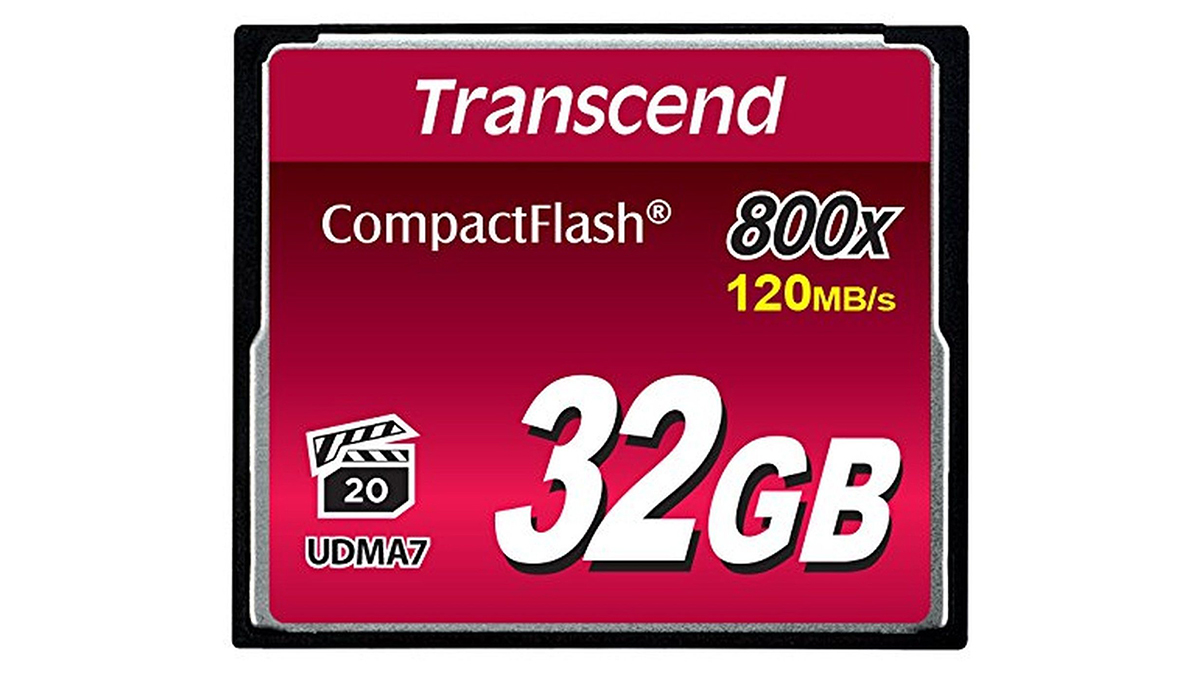
Taiwanese company Transcend is another long-term player in the memory card market – and still makes many low-chapters cards, meaning they're accessible to those on a tight budget. However, even the higher capacity offerings – such as this CompactFlash 800x serial – are inappreciably expensive for what'due south on offer. Capacities run from a standard 32GB up to 256GB. Specification is also impressive for a budget menu, with read speeds of up to 120MB/south and write speeds of lx MB/due south, although actual performance, of course, is afflicted past photographic camera hardware and software. Durable and reliable, there'south even a built-in error-correcting lawmaking to detect and correct any transfer errors.
CFexpress
Best CFexpress cards
CFexpress is rapidly becoming the retention menu format of choice for high-end stills and video cameras. Evolving from the XQD card format, CFexpress Type B cards (opens in new tab) share the aforementioned outer design every bit XQD cards, merely pack faster retentiveness inside, making them some of the fastest memory cards available today. Virtually all cameras that originally supported XQD cards have now been firmware-updated to as well piece of work with CFexpress Blazon B cards, and so cameras like the Nikon Z6 and Z7 are no longer restricted to XQD cards lone.
More recently, Sony muddied the CFexpress waters by bring to marketplace CFexpress Type A cards. This CFexpress carte variant is physically smaller than the Type B standard, and therefore yous can't apply a Type A card in a camera designed for XQD/CFexpress Type B cards. You wouldn't actually want to though, as the drawback of CFexpress Type A's firmness is a reduction in read/write speed, compared to Type B cards. At present, but a handful of Sony cameras utilize CFexpress Type A cards, virtually notably the Sony A7 Four (opens in new tab), A1 (opens in new tab) and a7S Three (opens in new tab).
• See also All-time CFexpress cards (opens in new tab)
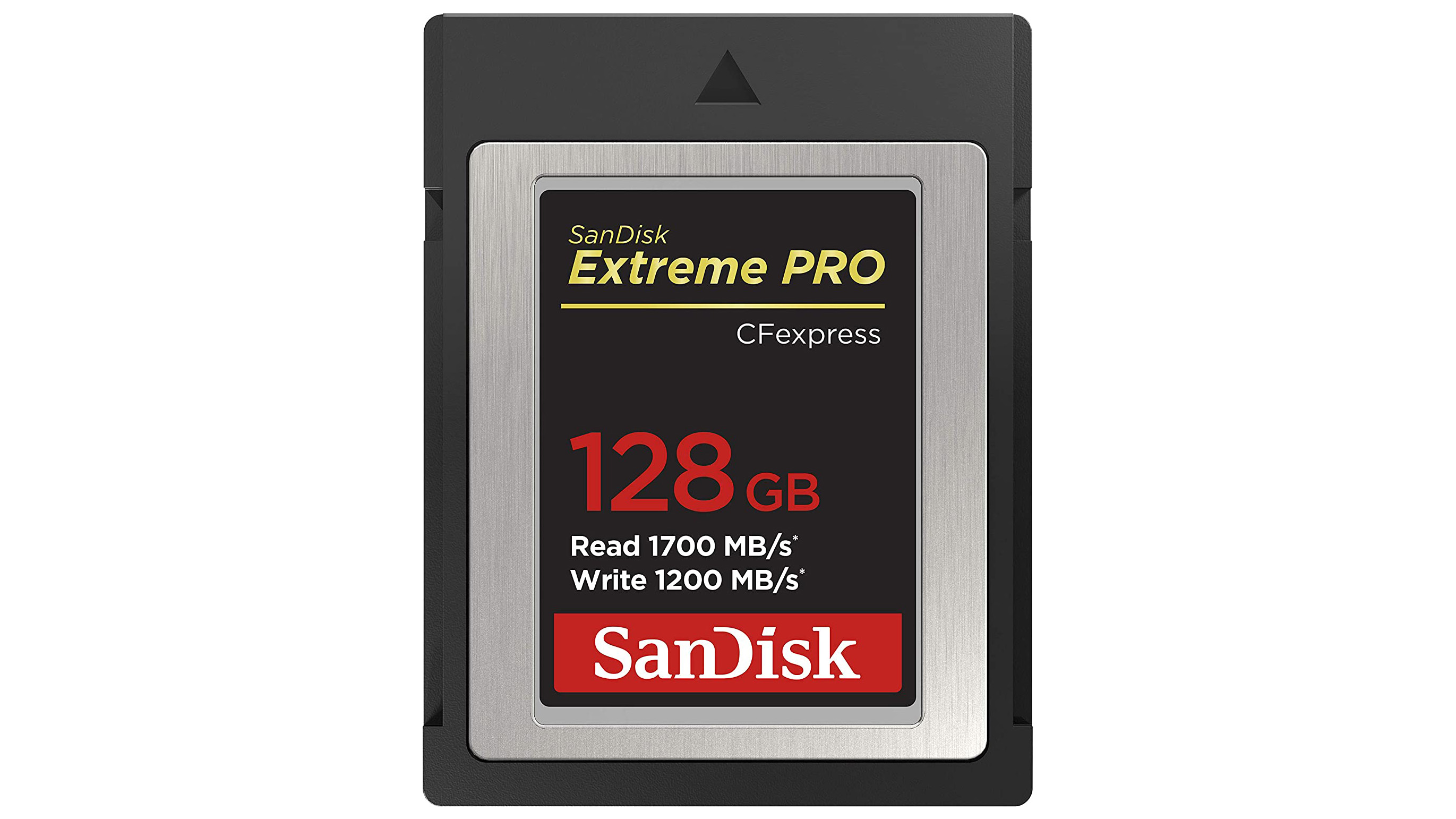
SanDisk was one of the first card manufacturers to market CFexpress Type B cards, and its Extreme Pro range is notwithstanding a force to be reckoned with today. Capable of upward to 1700MB/due south read and up to 1400 MB/s write, only a select few rival cards tin can go faster. All the same, you'll need to function with big bucks to go these speed ratings, equally they simply utilise to the top-of-the-range 512GB version. The 128GB and 256GB cards in the range can 'only' striking 1200MB/s write speed (the 1700MB/s read speed withal applies), but the poor old 64GB card is only rated for 1500MB/s read and 800MB/s write.
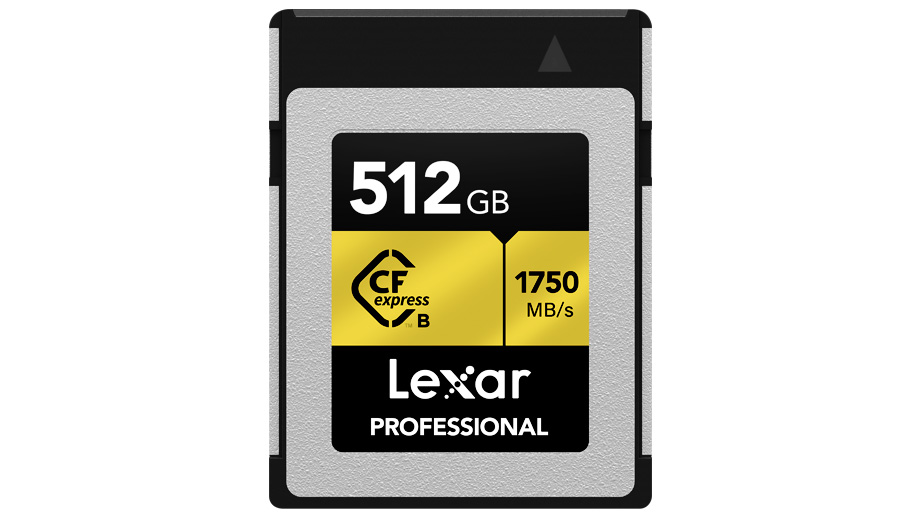
Lexar's CFexpress card is a star performer when it comes to read speed, with its 1750MB/s maximum rating slightly chirapsia the 1700MB/south advertised by many rival cards. However, the 1000MB/south write rate is less impressive and it trails most of the competition. Fifty-fifty then, you'll need to be shooting very high scrap-rate 4K or 8K video to have any take chances of running into trouble. Capacities range from 64GB to 512GB, and all take the peace of mind of beingness backed by a express lifetime warranty.

CFexpress cards can now be bought in 2 variants: Blazon A, and Type B. The latter is far more mutual and supported by loads more than cameras. Both types are based effectually the same technology, but differ in the amount of PCIe information transfer lanes available. the event is Blazon A cards take a theoretical maximum 1000MB/s information bandwidth, whereas Type B cards tin can reach upwards to 2000MB/s. So why is Sony bankroll the slowest 1000MB/south Blazon A CFexpress standard when faster Blazon B cards are already bachelor? It all comes downwardly to compactness. Where a CFexpress Blazon B card measures 38.5 x 29.8 x 3.8mm, a Blazon A card is considerably smaller at 28 10 twenty x 2.8mm. To put this in perspective, that's even smaller in length and width than a standard SD card.
With read/write rates of 800MB/s and 700MB/s respectively, Sony's Tough CFexpress Blazon A cards may be a lot slower than virtually Type B cards, just it'southward still very fast.
ProGrade Digital also has a 160GB Blazon A card yous can buy, only it's not every bit readily available as this Sony equivalent, and is only marginally cheaper. Delkin has Type A cards coming soon though, so hopefully prices volition start to fall further.
XQD
All-time XQD card
Nikon was the first photographic camera company to introduce XQD cards in digital cameras and a lot of people thought information technology would exist curt-lived, and since XQD has now evolved into CFexpress Type B, in some sense they were right. CFexpress cards are considerably faster than XQD cards (though that'southward not to say XQD is slow - far from it), and there are more than manufacturers producing CFexpress cards than XQD, leading to more competitive pricing.
Now that most XQD cameras have been updated to back up CFexpress Type B cards, it makes petty sense to buy a new XQD card, especially since they're still priced in line with comparable CFexpress Type B cards of equivalent capacities.
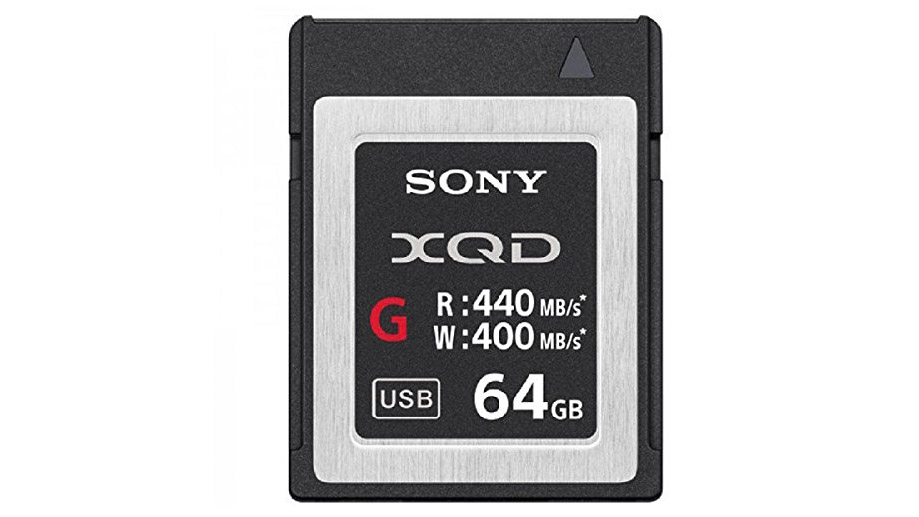
XQD is well suited to the high-speed data rates required from 4K video recording, and likewise for serving the maximum burst rates offered by stills cameras. XQD is supported past cameras like the Nikon Z7 (opens in new tab), Z6 (opens in new tab), D810 (opens in new tab) and D850 (opens in new tab). Information technology is also used by some professional Sony camcorders, and the Panasonic S1 (opens in new tab) and Panasonic S1R (opens in new tab). Sony has pioneered the format, with its latest G-series cards offer a write speed of 400MB per 2nd, and an equally impressive read rate of 440MB/due south. You'll get fifty-fifty faster speeds from a CFexpress Blazon B carte though, so if your XQD photographic camera now supports CFexpress, information technology may well be time to jump ship from XQD and pick upwards one of our height CFexpress Type B cards (above).
CFast
Best CFast card (opens in new tab)
CFast is a high-speed memory card that looks very similar to CompactFlash. The CFast format is used by and large by high-stop video equipment, such as professional movie theater video cameras from Canon, Arri and BlackMagic. In terms of stills cameras, this type of card is currently but used in the Catechism EOS ane-D Ten Mark Two and Hasselblad H6D-100C. Here are the best CFast cards (opens in new tab) on the market correct now:
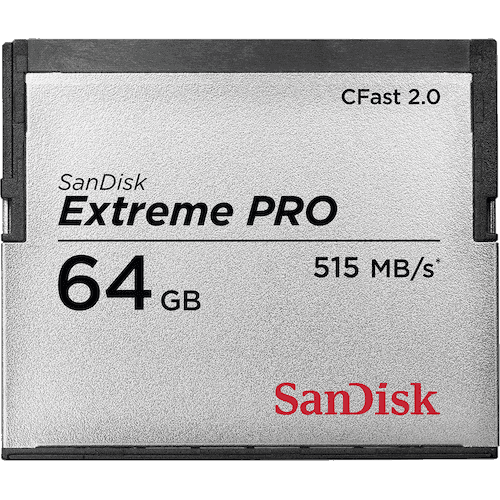
Lightning fast transfer speeds make CFast perfectly suited to 4K video shooting. SanDisk are the ones to watch in this format, and this nearly-contempo version of its CFast card offers a staggering write speed of 525Mb/s, forth with an admirable 400 Mb/due south read speed.
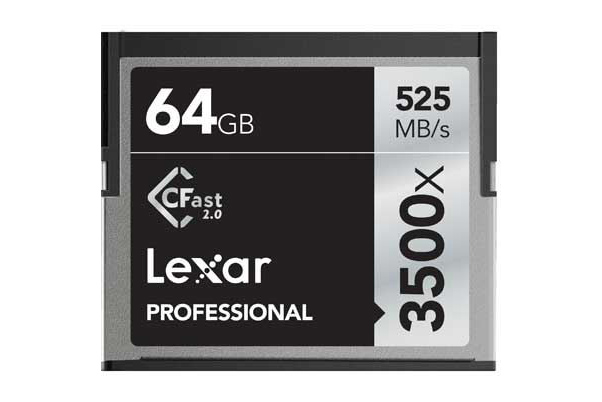
If you lot're oftentimes working with high quality 4K video, ProRes video, or RAW photos from cameras such as the Canon EOS-1DX Mark Two, then you'll know the value of a card that tin keep upwards with what you're shooting. Luckily, the Lexar 64GB 3500x CFast 2.0 bill of fare is with you every step of the way. With a write speed of up to 445MB/s, this Lexar CFast card can help you capture cinema-grade video with ease – while a 525MB/s read speed volition dramatically accelerate your post-production workflow.
Jargon explained
The best memory cards demystified
It'southward worth remembering that, despite the wide variety of retentiveness card formats, you don't actually demand to worry most what type you should employ. This is because this decision will take already been made for yous by the photographic camera manufacturers. This ways that you're not going to exist able to use a CFexpress card in a camera with a microSD card slot! However, information technology's notwithstanding worth knowing what the benefits and drawbacks of each retentiveness bill of fare format are.
SD
While SD cards might immediately come to mind when y'all think of retention cards, standard SD (Secure Digital) cards are really no longer manufactured. This is because the technology has moved onto SDHC and SDXC cards, which are readily available. If you take some old SD cards knocking around, you can still use them in newer cameras that have the SD carte format, but don't expect the same performance or capabilities offered by newer memory card generations.
SDHC
As an upgrade to the standard SD card, SDHC (Secure Digital Extended Capacity) cards offer retention capacities between 4GB and 32GB. This makes them bully for everyday utilize and entry-level users who don't have big storage capacity needs.
SDXC
You'll find SDXC (Secure Digital Extended Capacity) cards with capacities of 64GB and over. Designed for cameras with large sensors, lots of megapixels, 4K video and other data-intensive applications, serious photographers and videographers will desire to choose an SDXC card over SDHC. However, don't forget to bank check the read and write speeds to ensure you get the performance you lot need. To become a better understanding of these, read our article on agreement everything written on your memory card (opens in new tab)
microSDHC and microSDXC
microSDHC and microSDXC cards volition offering a similar performance to their larger SDHC and SDXC siblings. However, they're around a third of the size and tin exist used in the best camera phones (opens in new tab) and all-time action cameras (opens in new tab).
CompactFlash
CompactFlash used to be the preferred format for college-end DSLRs. However, with the improved functioning of SDHC and SDXC cards (and the introduction of newer memory card formats as well), this memory carte du jour format is growing more than rare.
CFast cards
While CFast cards look similar in size and shape to CompactFlash cards, they're non compatible (so don't endeavor to jam one in your onetime DSLR!). This new-generation high-speed memory card format will be constitute in professional person stills and video cameras.
XQD cards
We wouldn't be surprised if you hadn't heard of XQ cards, as they're a trivial more niche than the retentiveness menu formats listed above. At the moment, they're merely compatible with selected Sony camcorders and some Nikon DSLR cameras. It doesn't look likely that more cameras will bring together this format in the futurity, as it's now been pretty much superseded by CFexpress. Nevertheless, XQD cards offering corking performance for high-speed shooting and video recording.
CFexpress cards
As an evolution of the XQD format, CFexpress is one of the all-time memory menu formats around. However, information technology'south currently but available with a limited number of high terminate cameras (mostly from Canon (opens in new tab), Nikon (opens in new tab) and Panasonic (opens in new tab)). However, information technology's worth noting that the release of the Sony A7S III (opens in new tab) brought a somewhat confusing split into two different variants of CFexpress cards. Up until this point, all CFexpress-compatible cameras used CFexpress Type B cards (yes, 'B' does come before 'A' in this instance!). Meanwhile, CFexpress Type A cards are smaller and slower. Crucially, Blazon B and Type A cards aren't interchangeable, then a camera such every bit the Nikon Z7 won't be able to have a CFexpress Type A card.
Read more: How to sympathise everything written on your retentivity card (opens in new tab)
More buying guides
- The best microSD cards (opens in new tab)
- The best CFexpress cards (opens in new tab)
- The best SD card cases (opens in new tab)
- The best recovery software for photos & SD cards (opens in new tab)
- The 10 best compact cameras (opens in new tab)
- The 10 best mirrorless cameras (opens in new tab)
- The 10 cheapest full-frame cameras (opens in new tab)
- The eight best flashguns you can buy right at present (opens in new tab)
- The eight best monopods y'all tin can buy correct now (opens in new tab)
- The eight best camera backpacks correct now (opens in new tab)
- The fifty best photographic camera accessories (opens in new tab)
- The 6 best LED low-cal panels (opens in new tab)
Related articles
Source: https://www.digitalcameraworld.com/buying-guides/best-memory-card
Posted by: burkhalternobs1952.blogspot.com

0 Response to "Which Memory Card For My Camera"
Post a Comment